The SSP system is the combination of the complex technologies of scanning, sanding and polishing for painted metal and plastic surfaces into a completely automated process. A fully automated defect detection & processing in which all hardware/software components (camera system, robot path planning software, sanding/polishing tool) are perfectly coordinated and combined with the surface treatment know-how.
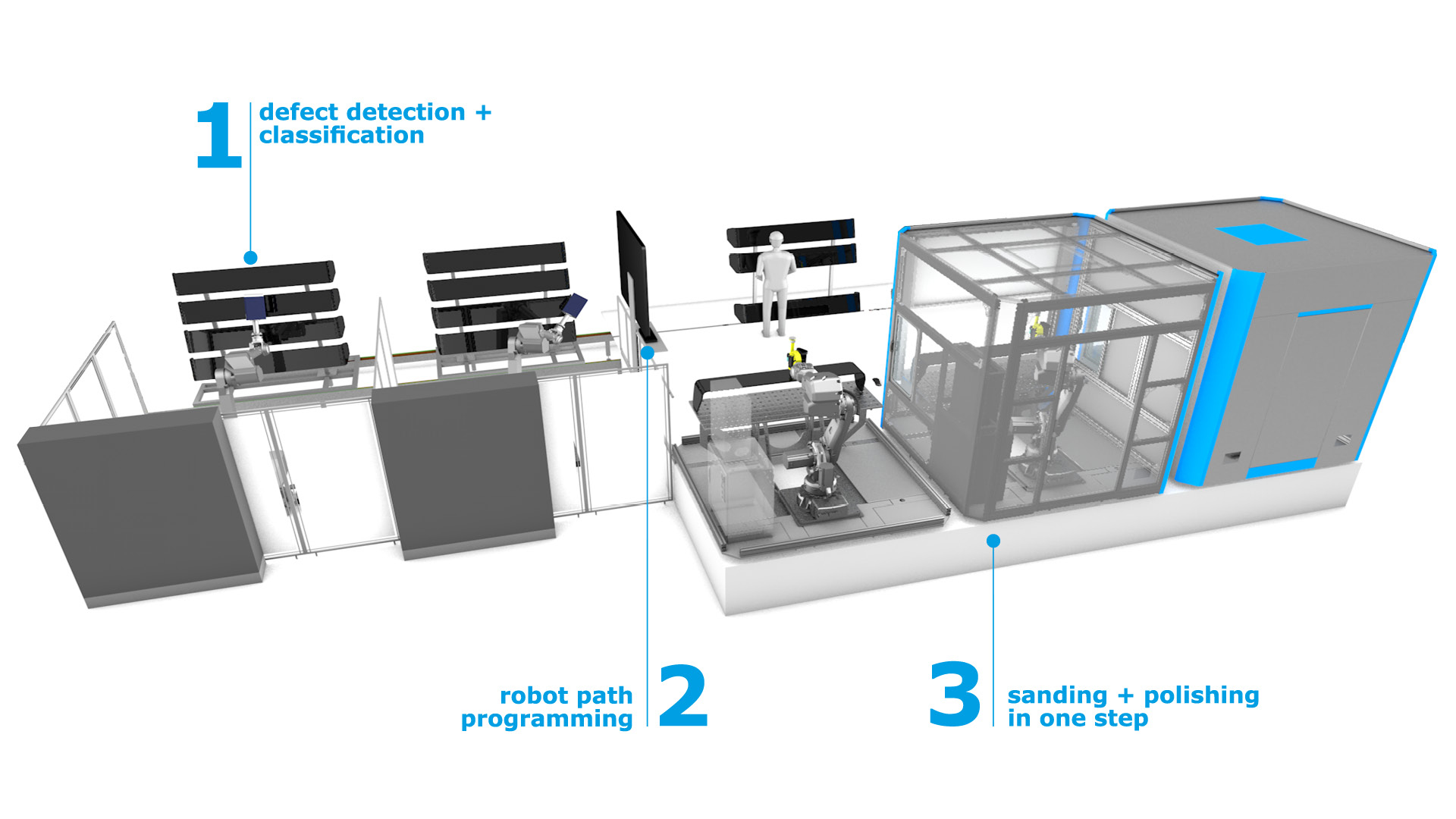
During the painting of plastic or metal parts, visible defects inevitably occur in the paint (e.g. paint inclusions). Until now, these inclusions have been detected and subsequently removed at many OEMs and their Tier1 suppliers in painstaking, time-consuming manual work by skilled personnel using visual inspection.
However, even with long experience and training, the critical eye as quality assurance remains very subjective and delivers fluctuating results in terms of reproducibility or quantifiability. The factors influencing inspection quality and defect removal range from personal quality perceptions and discretionary powers to individual daily form. However, overlooked defects and/or their inadequate elimination cause high costs and disruptions in the production process and are thus an enormous cost and risk factor. In addition, the strenuous activity is a strain on the skilled workers performing it. Painting defects are unavoidable. They are usually removed at great expense by a manual process. The shortage of skilled workers is becoming more acute.
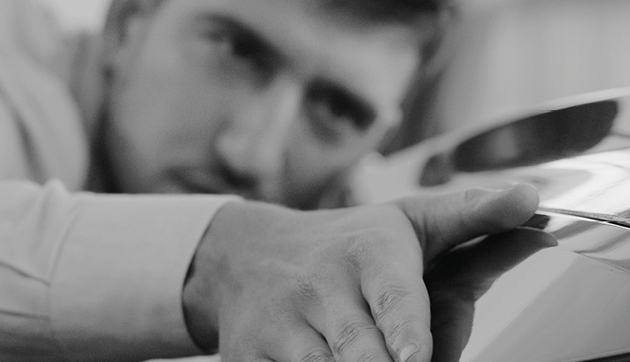
- Subjective assessment of the defect
- Variation in accuracy
- Painting defects are not measurable
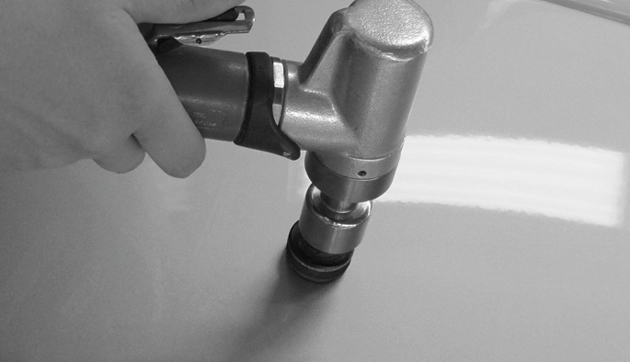
- Process not reproducible
- consumption of sanding blossoms fluctuates
- manual skill necessary
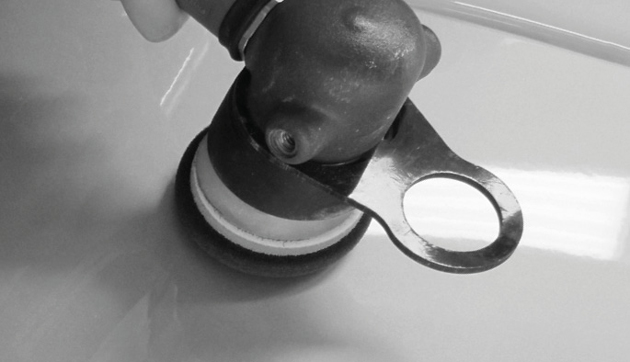
- difficult, stressful work step
- health hazards
- fluctuating quality
With the SSP system, accell offers a solution that performs the technologically demanding steps of "scanning, sanding and polishing" in a highly efficient, repeatable and fully automated manner. In terms of quality assurance, personnel and process costs can be reduced and valuable information can be collected to increase the quality of the painting processes.
The SSP system provides a precise and repeatable process for inspecting and eliminating surface defects, especially in the case of multi-variant and complex-shaped parts with high-gloss and clear coat surfaces or cathodic dip painting. The degree of damage of the defects is also taken into account and the subsequent processing is designed accordingly. Each defect is assessed individually and processed with specially coordinated procedures exactly as thoroughly as necessary. In addition to saving time, this also results in lower consumption of the abrasives and other materials used. By using industrial robots, the result is reproducible at any time and the quality is permanently ensured.
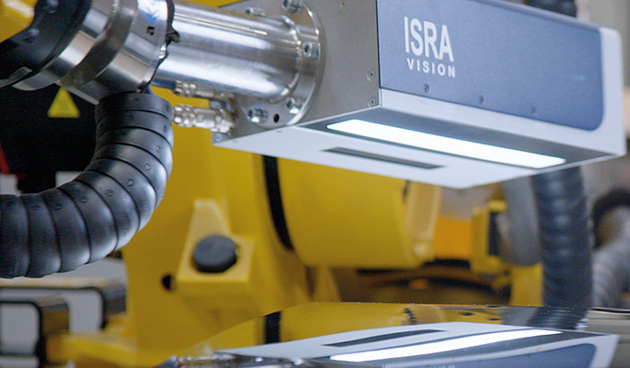
Location, size & type are the crucial information of a defect. The SSP system detects these parameters individually for each part with repeatable accuracy and precision. The collected data also helps to improve the painting process.
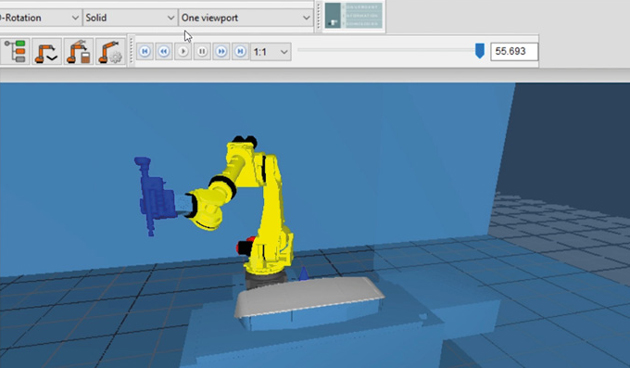
Each defect is not only individual in its characteristics, but also always at a different location. Software therefore generates individual robot paths, depending on the defect parameters. Automated and adjustable.
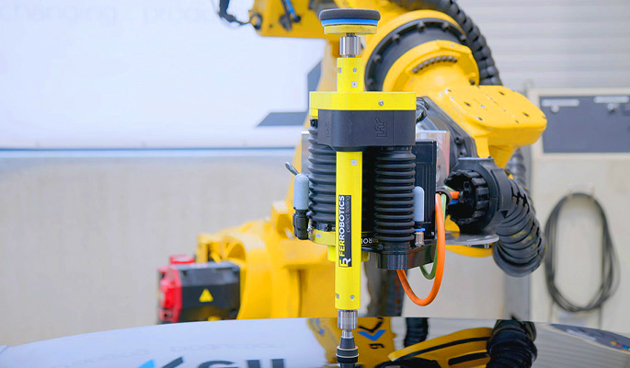
Sensitive, robotized sanding & polishing (without staff) removes defects. Of course, the complete process, such as abrasive change or polishing paste application is fully automated.
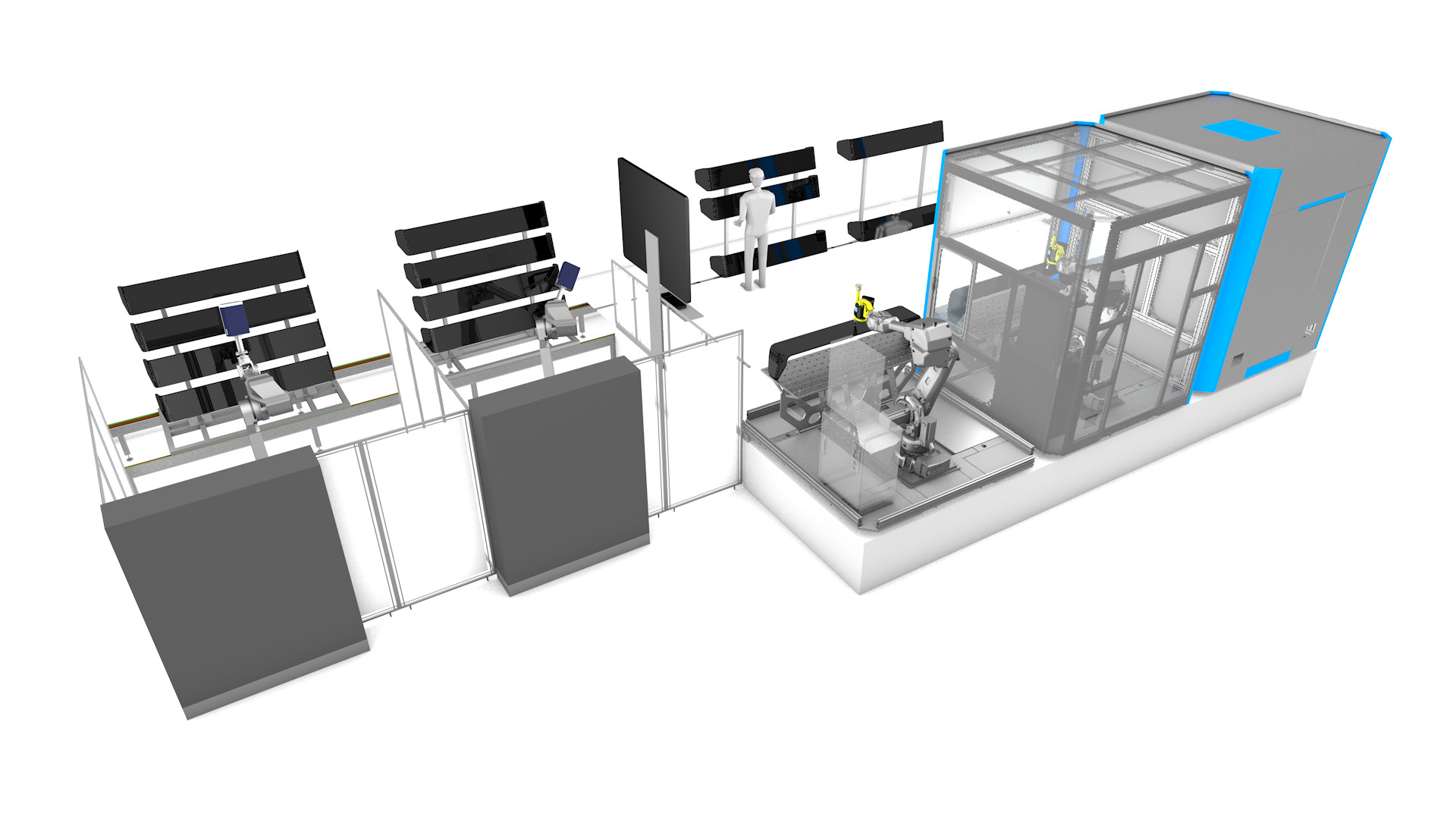
The process begins with a vision system using an industrial robot to scan the painted surface, even of larger components. Depending on the production speed or cycle time, several scanners can be used. Scaling is simple and economical.
Depending on the requirements of the parts, different scanners can also be used - in each case individually coordinated and defined. The detection of surface defects is a technologically demanding challenge, especially in the case of components with a large number of variants and complex shapes, which can already be simulated during the project planning phase. The surface inspection system achieves a defect detection of up to ≥ 0.15 mm and is thus superior to the human eye. Defects in the painting process can thus be detected much better and then repaired.
Each defect is detected or inspected several times using oversampling and classified multidimensionally. The analysis of the collected inspection data enables sustainable, continuous recording and thus contributes to preventing defects from occurring in the first place through targeted process optimization. Precise localization of the defect, combined with a powerful classification pipeline that can be individually adjusted to your quality specifications and defines the type and relevance of the detected defects, lays the foundation for path programming. The defect detection rate for topographic and non-topographic defects is typically > 98.5%.
Dedicated software is used for automatic trajectory planning. Defect location is done automatically and, together with other defect features, leads to individual robot motions.
Each defect is processed with its own "recipe". Other information, such as paint color, shape, proximity to design edges or distance to other defects, is also taken into account. The individual processing parameters include specifications for handling the task, such as different speeds of the robot, variance of the contact pressure, and much more.
The software plans the optimal repair of the detected defects fully automatically each time. To do this, the software evaluates the list of defects found. The recipes are taught in once. Based on this, the ideal processing recipe is automatically selected and applied to the surface, depending on the type of defect and its position on the component. Defect clusters or chains are analyzed and, if necessary, merged or treated separately. The movement of the robots and additional axes is planned free of collision, singularities, axis and cable restrictions, while the robot and tool paths are also optimized for accessibility, robustness and speed. This results in the perfect processing for every defect.
The software is more than just a fully automated reactive planner for surface repair. It is a complete environment for the fast definition of recipes and rules, for the simulation and optimization of all aspects of the defect application already during the project planning as well as during the analysis of the start-up or the input of new components. Each process can be traced for each defect, thus providing solid quality documentation.
The FerRobotics AOK XS Double Header, a 2-in-1 EOAT (end-of-arm tool), revolutionizes automated paint repair of plastic and metal surfaces. The intelligent system package combines patented Active Compliant Technology™ with a specially designed electric sander and polisher.
The advantage is the ability to operate two tools on one robotic flange without changing, quickly and efficiently. At only 11 kg, this combined applicator has an outstandingly light and compact design and, with its moving mass of less than 4.7 kg, is thus very responsive and highly sensitive. A fully integrated servo motor provides the drive. The system is designed to make structure-free surface processing of all materials robot-compatible. All parameters, from the rotation speed (100 - 10,000 rpm / typical application: 2,000 - 6,000 rpm) to the contact as well as process force (5 - 100 N / typical application: 10 - 40 N) to the feed rate are individually controlled, thus guaranteeing 100% process control.
There is continuous validation of the applied contact pressure in real time, through innovative, redundant force monitoring via sensors and a conditioned calculation model.
The enormously resilient end effector is designed for industrial use and delivers twice the power of commercially available units - 24/7. The AOK XS Double Header is low-maintenance and universally compatible with all common abrasives - so no special or manufacturer-dependent consumables are required.
The polishing paste application is also integrated, which is carried out directly via the unit onto the area to be polished with little overspray. This saves time and material.
The abrasive and polishing sponge are changed automatically at a changing station. This ensures self-sufficient processing of defects over a long period of time.
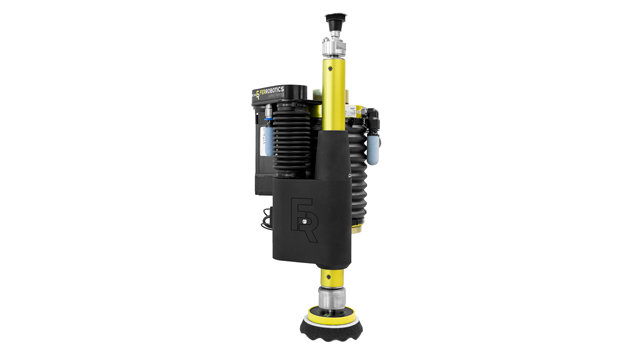
Sanding attachment
Optional orbital or rotation
Moving mass
Under 4,7 kg
Speed
100 - 10,000 rpm.
Typical application 2,000 - 6,000 rpm
Tolerance compensation
Max. Stroke: 35.5 mm
Active Compliant Technology ™
Force: 5 - 100 N*
Typical application 10 - 40 N
Polishing attachment
Optional orbital or rotation
*Tested under laboratory conditions
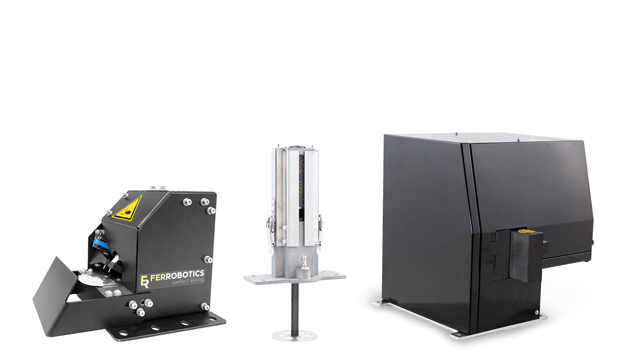
Compact
Minimal space requirement
Stripping station
Universal honing station
Process reliability
Internal process monitoring
Magazine
Velcro or adhesive paper magazine
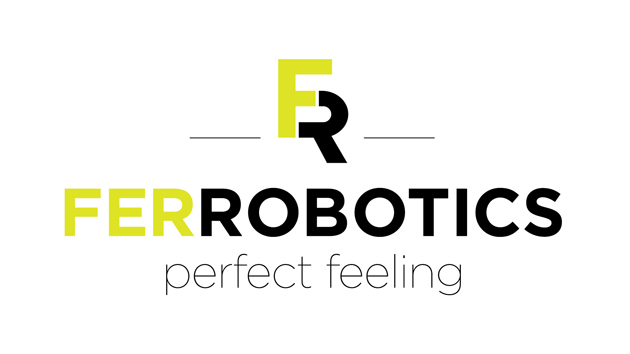
FerRobotics is the global market leader in the development and distribution of sensitive robotic elements that provide robots and cobots with contact intelligence (for robotic material removal and surface treatment with end-of-arm tools / end-effectors).
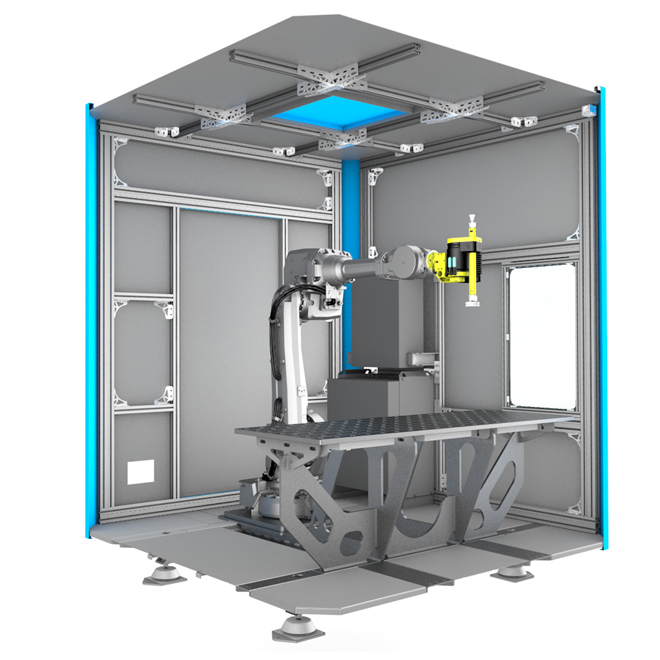
The linking of the complex technologies to an SSP system is done by accell. Due to our experience as a plant manufacturer or system integrator, we are a multidisciplinary contact partner who accompanies you through the entire project. From the first idea to the implementation and service, we implement together with you what is individually necessary to install the perfectly integrated SSP system.
In our technical center in Redlham, Austria, centrally located between Munich and Vienna, we offer you the opportunity to scan, sand and polish your parts. So you can convince yourself of the quality of the system, get first samples and check them. Furthermore, together with you we get first clues regarding suitable materials and of course the cycle time. This is particularly crucial for system design and planning.
We produce system layouts for you and validate them on site so that you can be sure that your system is a perfect fit even before you place the order. Professional execution from planning and installation to training of your personnel completes the overall package. Full service - from any conversion of the conveyor system to safety engineering and the declaration of conformity.
Of course we also help you with the parameter search: How can defects be handled most efficiently and gently? At what point is it a defect at all, which defects are no longer worth processing?
All these points are part of our scope of delivery, but also the integration of your personnel in order to be able to carry out a fine adjustment or to teach-in new parts. Of course we document these steps and are also there for you after acceptance in the form of maintenance support. You receive a ready-to-use & easy-to-use system from us - everything from one source.